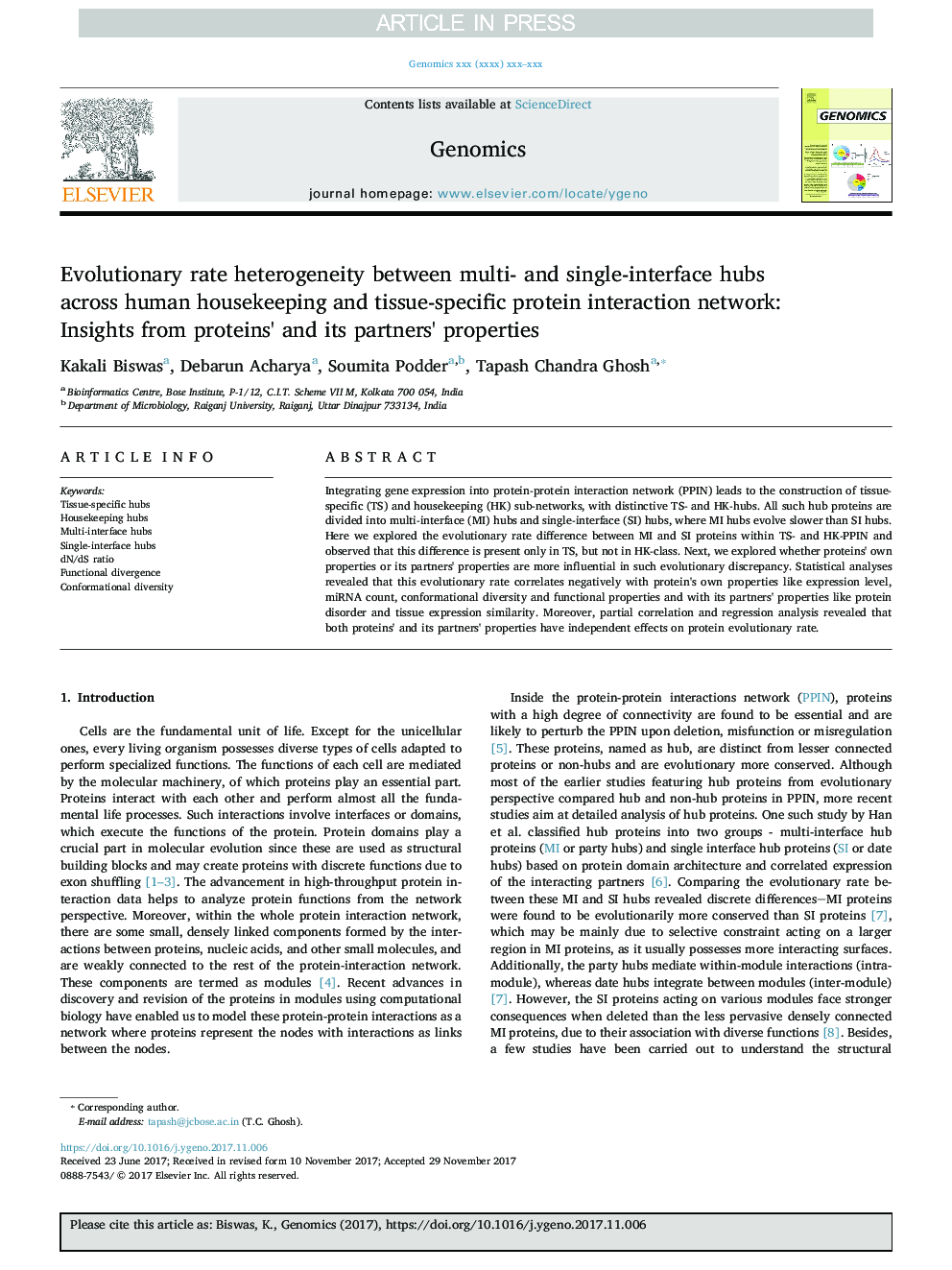| Article ID | Journal | Published Year | Pages | File Type |
|---|---|---|---|---|
| 8646304 | Genomics | 2018 | 8 Pages |
Abstract
Integrating gene expression into protein-protein interaction network (PPIN) leads to the construction of tissue-specific (TS) and housekeeping (HK) sub-networks, with distinctive TS- and HK-hubs. All such hub proteins are divided into multi-interface (MI) hubs and single-interface (SI) hubs, where MI hubs evolve slower than SI hubs. Here we explored the evolutionary rate difference between MI and SI proteins within TS- and HK-PPIN and observed that this difference is present only in TS, but not in HK-class. Next, we explored whether proteins' own properties or its partners' properties are more influential in such evolutionary discrepancy. Statistical analyses revealed that this evolutionary rate correlates negatively with protein's own properties like expression level, miRNA count, conformational diversity and functional properties and with its partners' properties like protein disorder and tissue expression similarity. Moreover, partial correlation and regression analysis revealed that both proteins' and its partners' properties have independent effects on protein evolutionary rate.
Related Topics
Life Sciences
Biochemistry, Genetics and Molecular Biology
Genetics
Authors
Kakali Biswas, Debarun Acharya, Soumita Podder, Tapash Chandra Ghosh,
